
The PlayStation VR community has been spending a lot of time in Sprint Vector lately, and while it isn't a new virtual sport, Apex Construct will no doubt soon be hogging some of the spotlight.
Developed by Fast Travel Games, it has been created from the start with story-driven VR content in mind. You play as someone called into a dystopian future world by Fathr, an AI created before "The Shift." It seems that — no surprise — humans turned everything upside down with their experiments, and the world is now stalked by robotic spiders, dogs, and more.
A narrator fills you in on what's going on here, and you soon learn that the voice is that of Fathr. There's another AI on the loose here named Mothr, created by a competing tech company before the world was rearranged. They seem to be at odds, and you immediately feel like you're caught between the two, used as some sort of tool. Whoever came up with the plot might have had a rough childhood.
After a quick tutorial, you're let into your safehouse, where you can buy upgrades for your bow, shield, and arrows, as well as choose which section of the city to venture out into to either progress the storyline or repeat to find all the secrets. As soon as you get into a real mission, it's evident that the game is going to be a treat.
About this review
I did a playthrough of Apex Construct using a standard PS4, though PS4 Pro is recommended. Released February 20 for PSVR, Apex Construct is also expected to be released March 20, 2018 for HTC Vive, Oculus Rift, and Windows Mixed Reality.
Apex Construct gameplay and mechanics
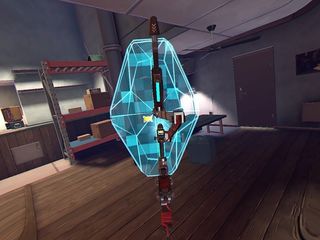
During the initial setup you're asked if you'd like to play seated or standing (you can also change this from the main menu). I chose the latter and didn't look back, as you're often required to make quick turns and often can't get quite get close enough with the teleport mechanic to properly reach out and grab something on a shelf or table.
Be an expert in 5 minutes
Get the latest news from Android Central, your trusted companion in the world of Android
I imagine seated play would be a bit frustrating, but at least there is standard locomotion available that lets you sidle right up to the edges without having to carefully point your controller and click to move. I suggest enabling smooth movement, as you can still teleport with it enabled. The combination is much better than just teleporting.
In the brief tutorial you're given a bow and arrows that will follow you through the rest of the game. This is your main weapon, equipped with an energy shield that can be deployed when you aren't firing arrows. While you can send it back into your artificial hand, I found that keeping it out beside me was easier.
There is usually an audio cue that heralds enemies in the area, but you will be surprised once in awhile. Entering the inventory screen above your left hand, choosing the bow, and drawing an arrow before you're attacked is often too slow when using the clunky Move controllers.
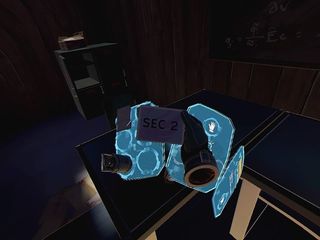
The inventory is laid out well, and you have six slots into which you can insert objects you find in the world. This makes for some interesting inventory management issues in the later game. Within this hand menu is also where you can choose which arrows to use based on the task at hand (some deliver different damage and some are required to complete puzzles), a health bar, and a currency counter.
A lot of the time you'll be walking around, discovering the world and solving puzzles, and this is for the most part the best part of the game. There is some seriously frustrating typing you have to do to gain access to doors and to read files — a must for anyone who wants to get the whole story — that will have you screaming when, for the eighth time in a row, your virtual finger mashes three keys at once and you're hitting the Del key once again. Hacking terminals with a keyboard in VR is certainly a good idea in theory, but the PS Move controllers don't seem up to the task.


The Move controller problem carries over to combat. There are already a few archery VR games on the market that get the mechanics right, and I think Apex Construct can sit among them. But that's only when your bow isn't ghosting around on its own because you've put the controllers close together to draw the bow and the camera has lost tracking. Again, this is an issue with PSVR rather than the game itself. When your bow works as it should — which is about 75 percent of the time — downing an enemy is satisfying, especially when you can nail them before they get close.
Playing Apex Construct with a 360-degree trackable environemnt would make a lot more sense.
You can choose from either a click-and-flick method of snap turning or smooth rotation with a button press, but can't use both though they use different buttons on the Move controller. When you're under pressure, the former method often fails. If you don't flick your wrist quite far enough, you'll turn 180 degrees rather than about 45, and turning your physical body doesn't work either because the camera is only in front of you.
Smooth turning is a bit better, but playing Apex Construct with a 360-degree trackable environemnt would make a lot more sense and would no doubt result in far fewer deaths at the hands of an enemy who probably recounted the tale to his pals later about how I was spinning around with a flailing bow while he/she shot me undisturbed.

Luckily, when you do die, you're able to continue from just before the moment combat was initiated. You don't get by without a penalty though, and the in-game currency, Radiance Points (RP), are removed from your person. RP is only safely banked when you make it back to your safehouse at mission's end, and from there can be used to buy upgrades.
Apex Construct immersion and world

The world after The Shift is one that I didn't at all mind exploring. Right down to bus numbers inside of the wind shelters, it is beautiful and full of detail. Buildings sit every which way, and water trickles out of enormous rock formations, gurgling and sparkling. It's easy to run through the game at top speed, hitting the bare minimum of requirements to complete puzzles, but once you slow down, you begin to notice the small stuff.
Inside, where there's a bit less to look at, there are notes and charts and storerooms full of tidbits that tell just a bit more of the story, enticing you to go back and search through the level again when you see that you're still missing a secret or two. The first few times I returned to the safehouse, I went straight back to the mission screen to continue. I finally decided to explore a bit at home and discovered that even here there were a few things that contributed to the overall feel of the game.
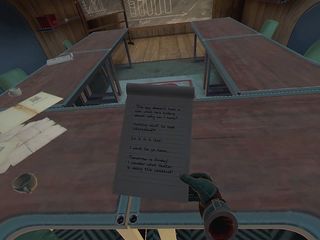
It takes about five hours to get through the story, but you can no doubt spend a lot more time here getting to 100 percent completion. Some areas are not accessible the first time through, so all you can do is make a mental note to come back later. Other than the frustrations here and there brought on by the hardware limitations, I left feeling satisfied. The voice of Fathr has a bit of a cheesy whisper sound to it — my significant other asked if I was playing a Batman game — but even that kind of adds to the mystical feeling once you listen to it for awhile.
If you're running PSVR with a standard PS4, don't fret. Graphics are impressive, even on the older console, and I imagine running the game on PS4 Pro will take it even further. I saw a couple of minor bugs I think had to do with objects clipping with others, but nothing at all close to game-breaking.
Apex Construct review: Conclusion
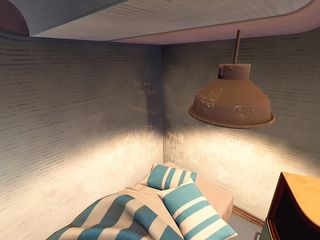
Apex Construct is a game clearly created with love, and it shows in the beautifully shifted world and its many secrets. The story is intriguing and once completed, the list of secrets pulls you back for just one more foray into the city. The puzzles are varied enough that they don't get stale, and you'll only be screaming in frustration at the virtual keyboard part of the time.
The combat has you dodging and alternating between shield and bow, and it changes things up by forcing you to choose the right arrow for the enemy at hand, but the PSVR's Move controllers often bug out and have you shooting anywhere but at the robotic foe. Likewise, in tense moments, snap turning in the game and really turning in your VR space get mixed up, and once the controllers are out of sight of the PS camera, it's time to restart from a checkpoint without the RP you gained.
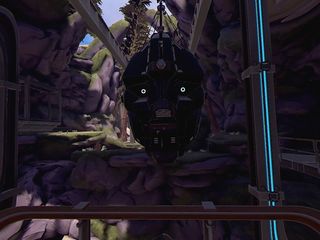
Bottom line here is that Apex Construct is a great game (especially at about $30), but the overall experience is held back by the hardware. Any game with a bow should make you feel like you're a dead-eye shooter, but you'll almost feel yourself dreading the next encounter, and not because the enemy is too skilled or strong.
When it all works as it should — which, I should say, is still the majority of the time — I can see that the developers really cared about their project, and I can see that it's going to be a memorable experience for a lot of people.
Pros:
- Detailed, beautiful world.
- Interesting story.
- Lots of secrets to find.
- Varied puzzles to solve.
Cons:
- Typing is a nightmare.
- Combat often feels like a coin toss.
- Overall held back by hardware.
4 out of 5
